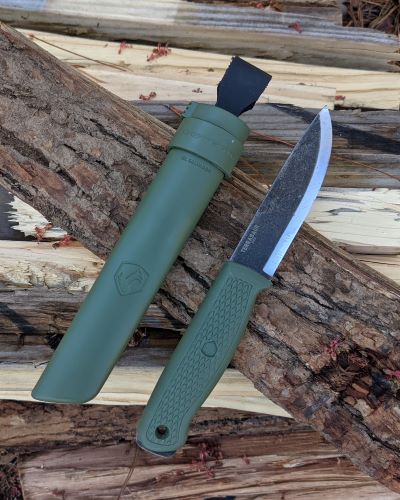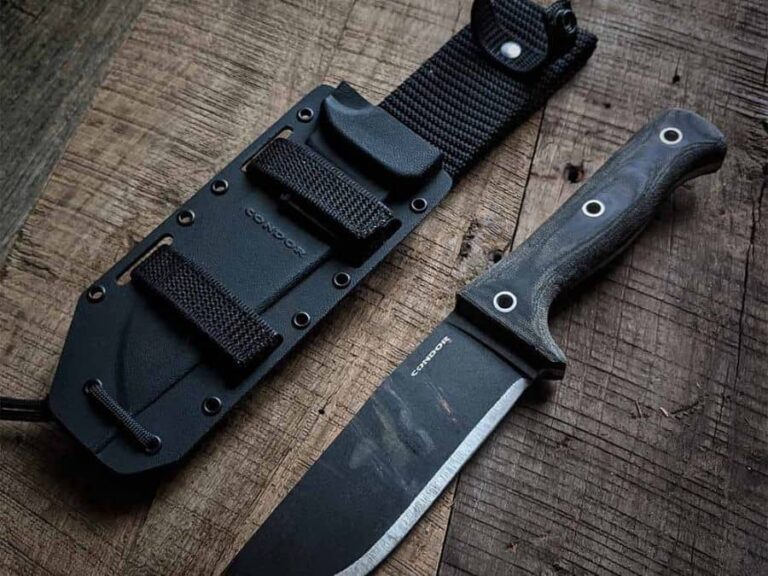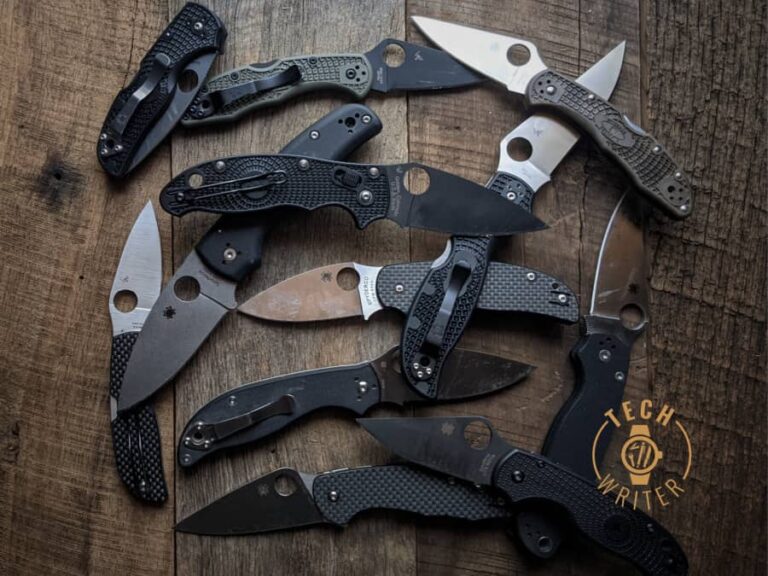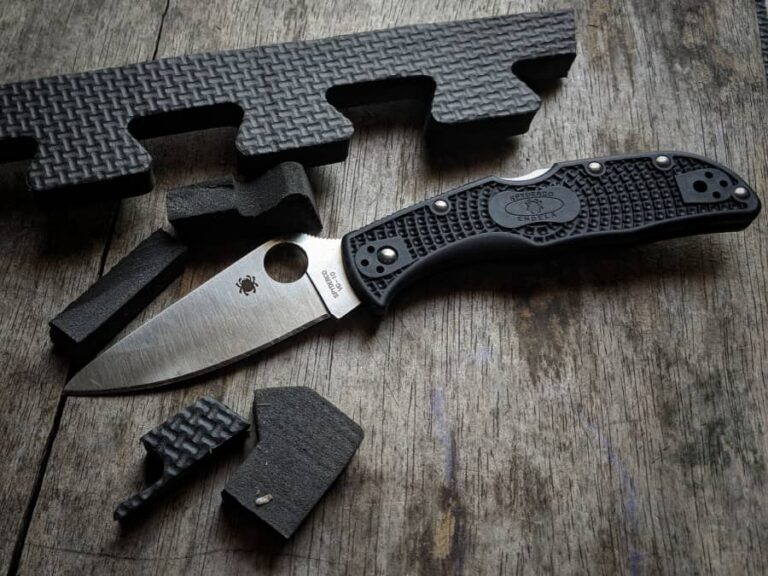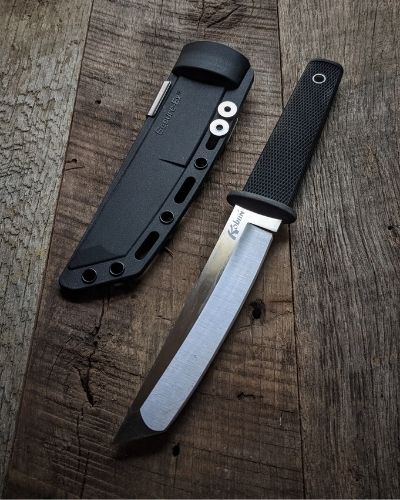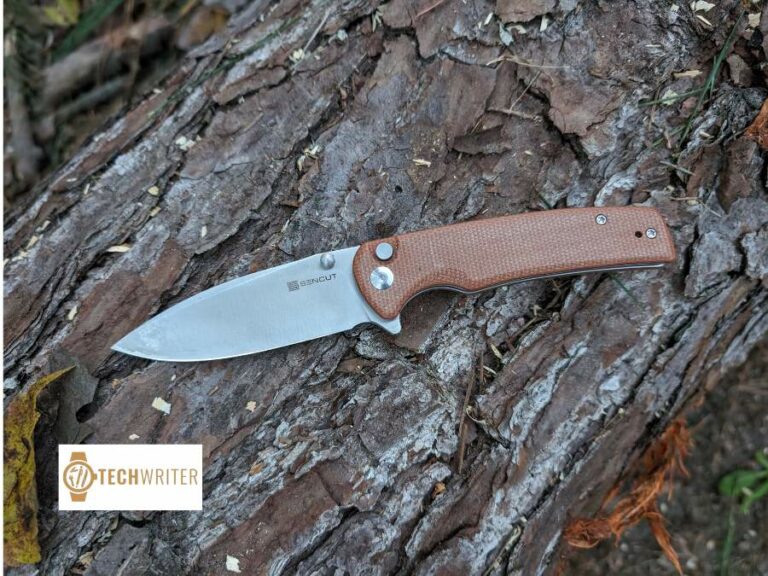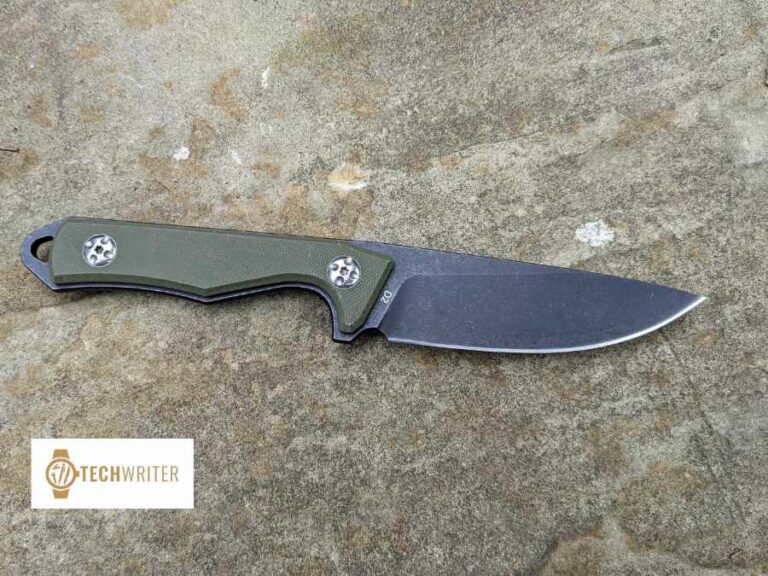Condor Terrasaur Fixed Blade Knife Review
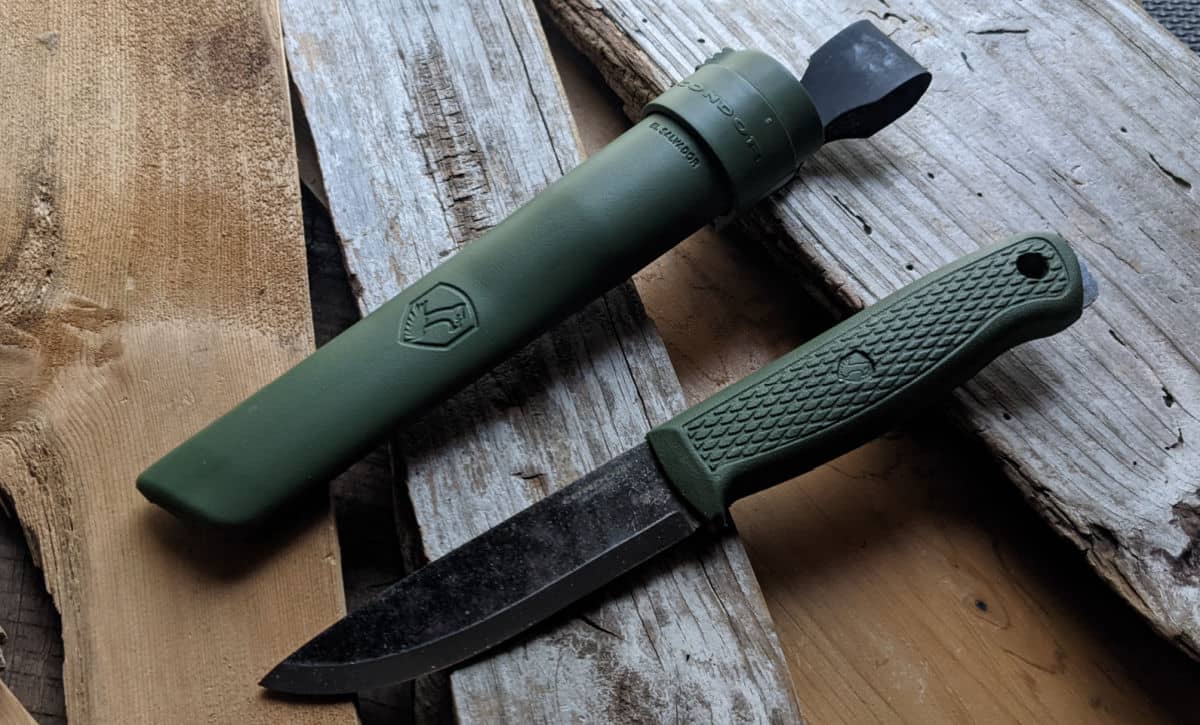
Quick Overview:
The Terrasaur is a solid choice for many situations. Carving out a spot in the traditional Bushcraft Knife world, this guy offers a real alternative to the Morakniv. If you’re looking for a good bushcraft knife and your budget is $50 or so, the Condor Terrasaur is one of the best and most versatile knives you can get.
MSRP: $56
Our Recommendation
Cons:
- Honestly, I Don’t Have Any
A good knife doesn’t have to be fancy, and it doesn’t have to be expensive.
The Condor Terrasaur is a fixed blade bushcraft knife that is neither fancy nor expensive, but it’s a rock-solid workhorse that pretty much handles any task you ask of it. It’s a good knife.
Designed by Joe Flowers—a guy who has more than a few cool knife designs in his portfolio—the Terrasaur is kind of an everyman’s bushcraft knife. It’s designed to be beginner friendly, while still offering the quality and durability that a master woodsman would need.
The Terrasaur has a reputation for being dependable, affordable, and darn near indestructible. I got one recently, and was excited to put it to the test.
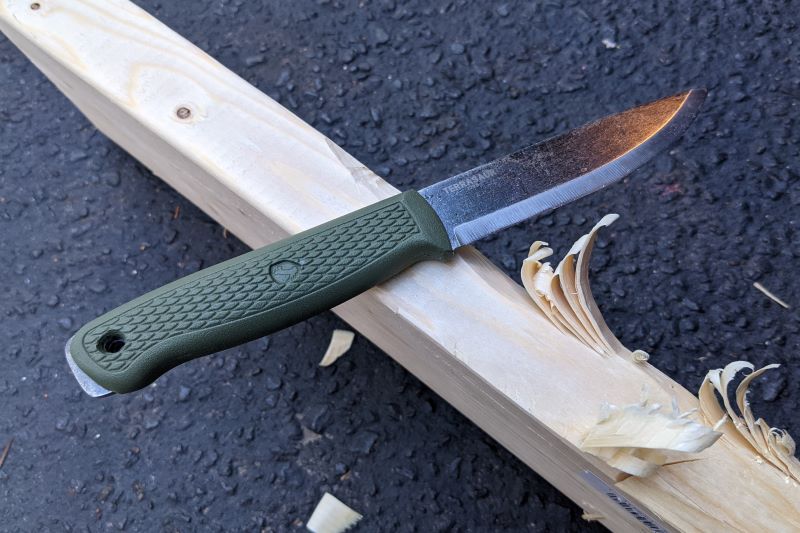
Condor Terrasaur: First Impressions
My Terrasaur came razor-sharp right out of the box, its blade nicely oiled inside the sheath. The sheath and handle are made of tough polymer and available in several matching colors, including orange, black and army green. The blade is 1095 steel, which we’ll talk about a little more later on.
My first impression of the Condor Terrasaur is that it looks a bit like a Morakniv. In researching this knife I’ve noticed that many reviewers frame it as a competitor to the Morakniv Garberg in Particular. There’s a passing visual similarity to the Mora Companion as well.
Ultimately, I really believe that the Terrasaur is its own thing, despite having a few similarities to the Morakniv line. With a price tag a little inder $50, it would make a good upgrade from the Morakniv Companion—one of my favorite ‘starter’ bushcraft knives—or a more budget-friendly alternative to the Garberg.
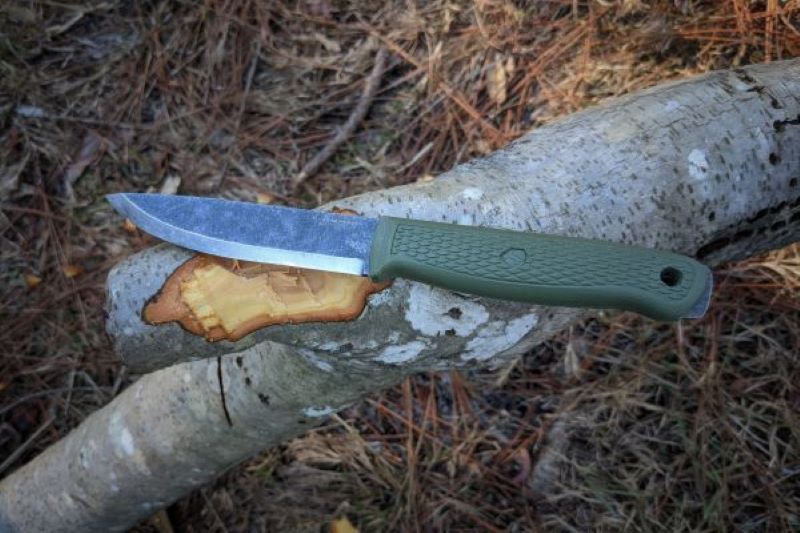
Measurements and Specs
According to the official measurements, the Condor Terrasaur has a 4.15” blade, and measures 8.83″ total. For some reason, I decided to do my own measurements, which put the blade closer to 4.25” and the total length at 9” on the dot.
I double checked with a second measuring tape too, just to be sure. I’m not sure what that’s all about, or if it really matters, but I was a little surprised by the discrepancy. I also weighed my knife, and the official weight of 7.1 oz. (200 g) appears to be right on the money. Go figure!
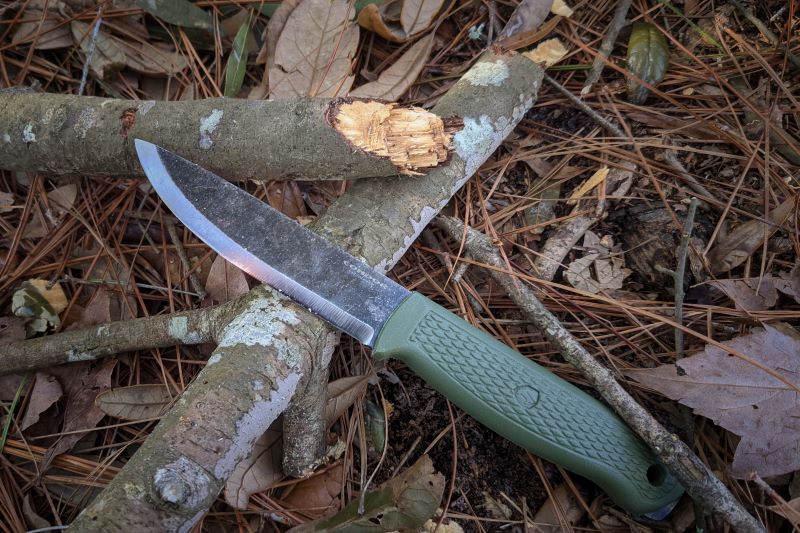
Terrasaur Blade
The Condor Terrasaur has a Scandi grind drop-point blade.
The curvature of the blade isn’t quite a spear-point, but it’s pretty close. I’m a fan of a Scandi grind, especially on a bushcraft knife. The geometry is perfect for working with wood, thanks to its single grind angle and very thin edge. It’s also the easiest grind to re-sharpen. The grind on the Terrasaur is smooth and even.
The blade has a full tang, which runs the full length of the knife and is actually visible at the rear pommel-end of the knife, where it emerges from the handle. It’s well-balanced and very sturdy. I consider a full tang to be pretty much essential in a quality bushcraft knife for strength and impact-resistance.
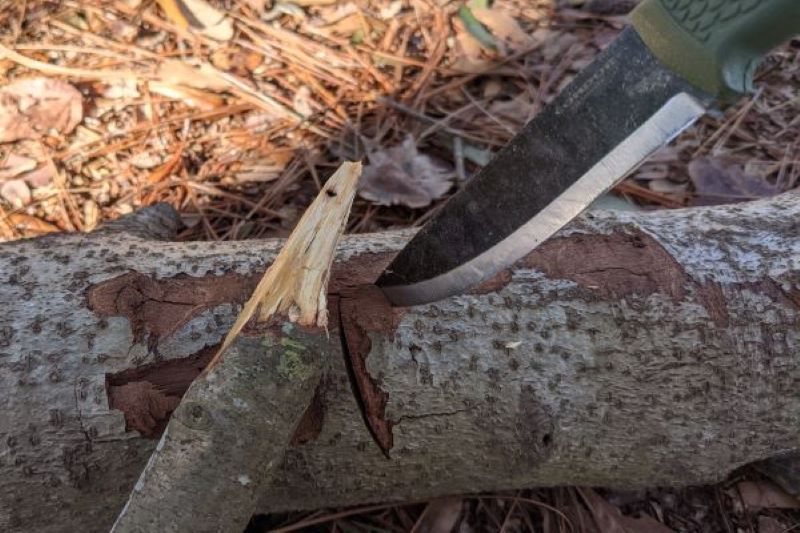
Let’s talk about steel.
The Condor Terrasaur blade is 1095 steel, which is a really great best-of-both-worlds steel for a bushcraft knife.
It’s not any kind of fancy, expensive designer steel, but I don’t really think your average outdoorsman needs top-of-the-line steel. 1095 is a pretty common high-carbon steel in bushcraft in knives, and it’s great because it offers a great balance of strength and workability.
1095 steel is about 1% carbon, along with a dash of manganese, sulphur and phosphorus. That carbon content makes it hard and easy to sharpen, and the Terrasaur blades are heat-treated to increase their strength. The strength of the steel, along with the thickness of the blade (0.12″), allows the Terrasaur to handle heavy-duty bushcraft chores without chipping or breaking.
One thing you should be aware of is that 1095 is not stainless steel. It will rust if you don’t take care of it. Wash and dry it after each use, and oil the blade every now and again.
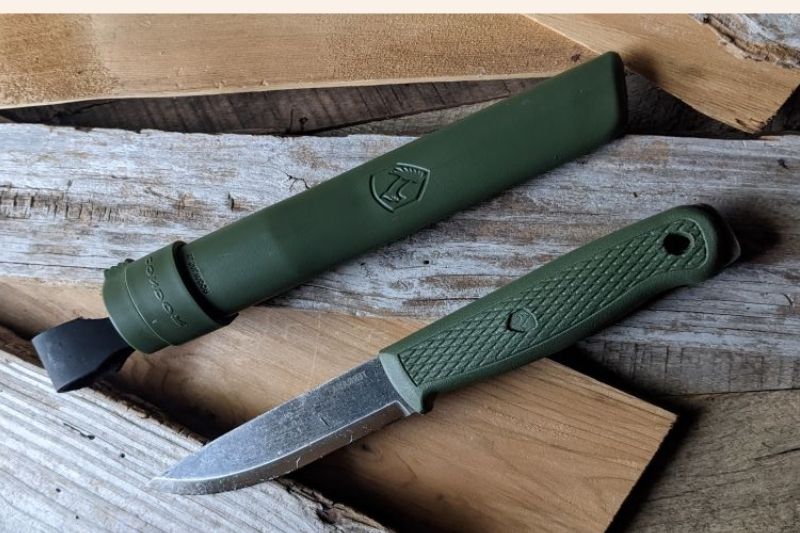
Handle & Sheath
Both the handle and sheath of the Terrasaur are made of molded Polypropylene, a type of thermoplastic polymer that’s extremely hard and more heat-resistant than your average plastic. It’s tough stuff.
The handle has a simple shape and fairly neutral feel in my hand. It’s easy to grip, and has a diamond-textured pattern stamped into it to give it a bit of extra hold. I’ve used it with sweaty hands and in rainy weather, and it resists slipping very well.
If you have smaller hands, you may find that the curve of the handle isn’t quite the fitted, contoured grip you might prefer. But overall it’s well-shaped and comfortable for average or larger hands.
The sheath is ambidextrous, which is a nice touch for all you lefties out there. It protects and holds the knife snugly—almost too snugly at first, but it loosens up a bit with repeated use—and has two small drain holes at the bottom. There’s a leather belt loop that snaps on and off, so you can reverse the sheath and wear it either right or left-handed.
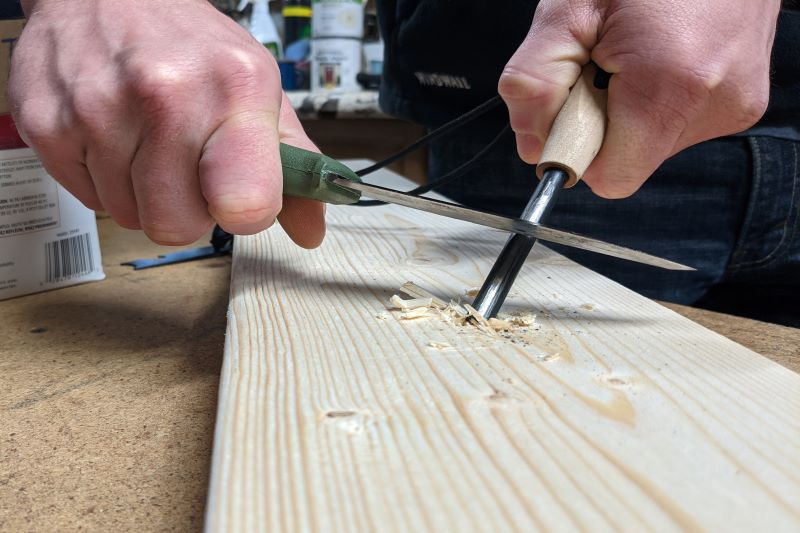
Using the Condor Terrasaur
The Terrasaur is meant to be a versatile bushcraft knife, and it lives up to that intention. It’s an able hunting knife, and works equally well as a jack-of-all-trades camping knife. Everything about it is useful, right down to the exposed tang at the butt of the handle, which is handy for hammering.
The Scandi grind blade has some great ‘bite’ to it, and I found it to be an excellent chopper, even though the blade itself is a little thicker than one might expect a chopper to be. That thickness helps it with tougher jobs like batoning firewood. I put the Terrasaur to task splitting some pretty tough stuff, and it didn’t flinch.
It’s also well suited to finer carving, chipping, shaving and making feather sticks. The spine of the blade is sharply squared off at 90 degrees, and I found it perfect for shaving tinder from dry wood. The spine also sparks nicely when struck with a Ferro rod, so this is a solid knife if you plan on using it as part of your fire starter kit.
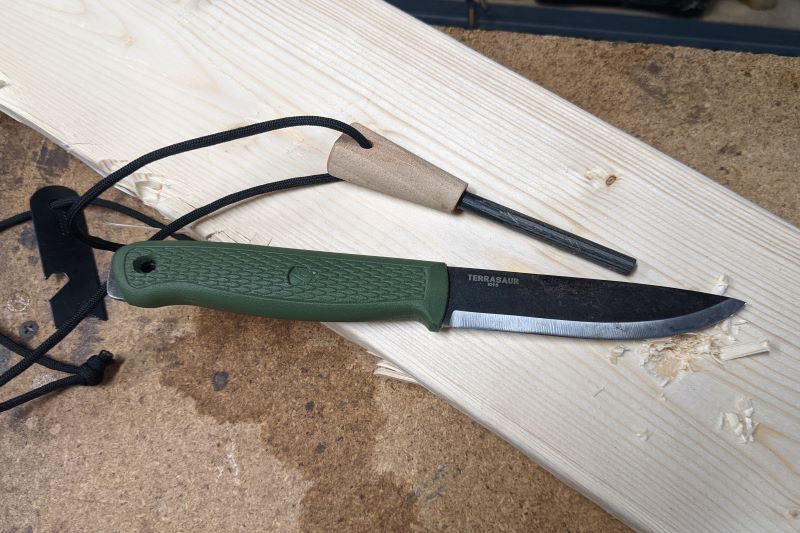
Final Thoughts on the Condor Terrasaur
Condor Tool & Knife is mostly known for making knives that look and feel more rugged and outdoorsy, with wood handles, leather sheaths and whatnot. That makes the Terrasaur a bit of a departure from what this company is known for, but a welcome one.
This is a tough, well-made knife that I consider to be an excellent value. Between the heat treated 1095 carbon steel blade and the high impact polypropylene handle, it’s about as close to indestructible as a knife can get. It’s affordable, but it doesn’t feel cheap, which I think is an important distinction.
If you’re looking for a good bushcraft knife and your budget is $50 or so, the Condor Terrasaur is one of the best and most versatile knives you can get.
Circling back to the Morakniv comparison, this is a knife that stacks up well against the Mora Garberg. I wouldn’t necessarily say that the Terrasaur is better, but it’s in the same ballpark, and in my opinion a better value given the lower price tag.
I also know that Morakniv fans can be very devoted, so I fully expect to get some feedback on that. I’ll take the heat.
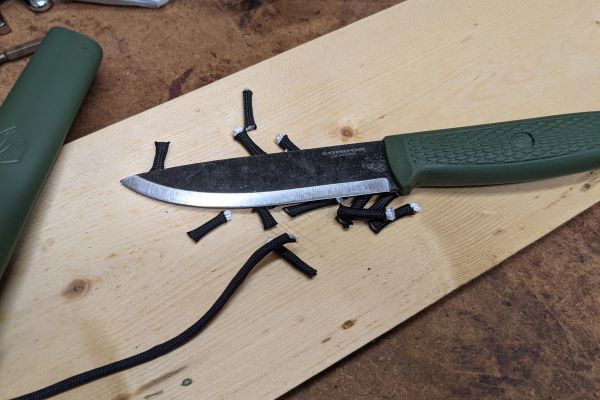
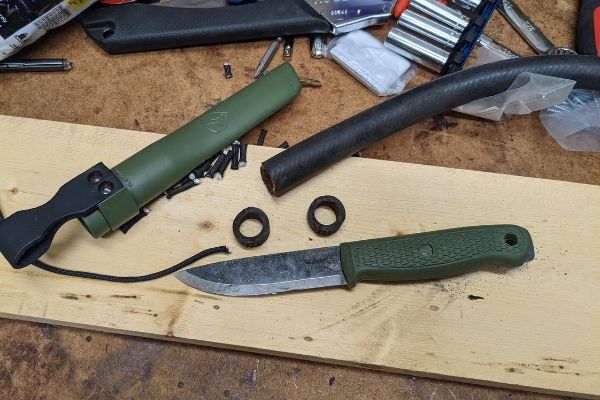

Blair Witkowski is an avid watch nut, loves pocket knives and flashlights, and when he is not trying to be a good dad to his nine kids, you will find him running or posting pics on Instagram. Besides writing articles for Tech Writer EDC he is also the founder of Lowcountry Style & Living. In addition to writing, he is focused on improving his client’s websites for his other passion, Search Engine Optimization. His wife Jennifer and he live in coastal South Carolina.

